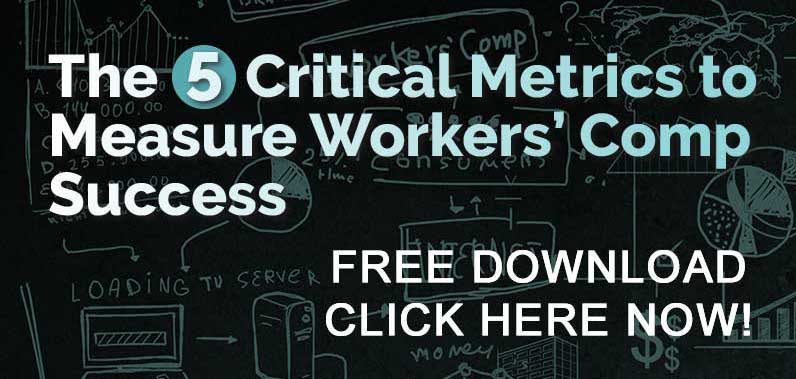When reviewing medical records or looking at medical notes from an injured worker’s doctor, some of the diagnosis wording can be confusing. This is especially true with strain-type injuries. The word “exacerbation” and “aggravation” can mean the same thing in certain scenarios, and they can carry different meanings in other scenarios. Adjusters are always looking for the physicians involved in work comp to differentiate between these two words, and how they apply to the injury of the employee. We explain these words, and their meanings, below; however, keep in mind these definitions are general and can differ in different jurisdictions.
Click Link to Access Free PDF Download
-
What does “Exacerbation” mean?
Physicians use this term when they talk about a temporary flaring-up of a pre-existing medical condition, generally some form of arthritis. This could be degenerative disc disease, osteophytes, bone spurring, spondylosis, spondylolisthesis, etc. Everyone has a certain degree of arthritis in their joints and in their spines, and some have it worse than others, regardless of age. In fact, there are many people in the 18-30 age range with spines that look like they should be well over 60 years old. Nobody is really sure what contributes to this, but a lot of it has to do with genetics, activity level, and the demands of just plain day-to-day living.
When a doctor states your worker “has an exacerbation of pre-existing degenerative disc disease” it is just a way of saying their arthritis has flared up. The real question when it comes to work comp is, “When is this exacerbation subsided? Disability guidelines state that an exacerbation will resolve within a period of two to eight weeks, depending on the level of exacerbation and the level of the pre-existing conditions. So, if someone has a decent looking X-ray without a lot of arthritic conditions, they would be on the lower end of that scale, whereas someone with a higher degree of arthritis would be on the higher end of that scale.
Adjusters will always ask doctors if they are continuing to treat the exacerbation, or are they treating the pre-existing arthritis? Doctors often tiptoe around this subject, since they don’t know how bad the worker was hurting prior to the injury. Adjusters question treatment and use tools such as disability guidelines and the IME in their efforts to continually investigate and evaluate or “adjust” the claim. Therefore if there is a question about continuing treatment, the adjuster will request an IME (Independent Medical Evaluation), and the IME doctor will decide. Most times the future coverage of medical treatment will hinge on the result of the IME and the case either moves on or becomes disputed based on that result.
-
What does “Aggravation” mean?
When we start to talk about aggravation of pre-existing arthritis, this is another level beyond exacerbation. Aggravation, in the minds of most physicians, means you have somehow worsened a pre-existing condition. This does not mean the work injury actually pathologically changed the diagnosis and location of arthritis; it just made it worse somehow. When the patient has had multiple types of treatment and weeks of therapy, and the end result is the worker being no better off six weeks later than they were at the time of the injury, doctors will lean towards using an “aggravation” diagnosis since the worker has failed to improve with conservative treatment.
In the world of work comp, this is worrisome to the adjuster. The general public has never had an MRI for fun, and once they get an MRI for the first time it will probably show a handful of arthritic problems, usually most of which aren’t traumatic in nature. The worker will tell the adjuster “I never had any back problems prior to my injury at work, so work must have caused all of these issues,” That is not exactly 100 percent true, since most forms of work do not actually cause arthritis in multiple levels of the spine, but a work incident can flare them up so bad that it is hard to get them to calm back down.
Useful again is our friend the IME. Adjusters will turn to an IME doctor to ask if any ongoing pain or problems stem from said injury, and if the IME doctor does relate it back to the injury, what treatment is needed to calm it back down to where the worker is functional again like they once were? Truthfully, only the injured worker knows what degree of back problems they had prior to this injury. We all get sore and have aches and pains. But, we all do not run out to get MRIs and track the progress of our issues, unless you do have some actual serious medical problems going on that are not occupational in nature.
FREE DOWNLOAD: “5 Critical Metrics To Measure Workers’ Comp Success”
-
Determining Compensability
This issue is from the adjuster’s standpoint. Some strain-type injuries will be compensable, and carriers will be on the hook to provide some medical care for these injured workers, if the claim is compensable. But as the worker fails to get better, the adjuster will dig deeper and see what issues are present on X-ray or MRI that are not occupational in nature. Then they have to turn to the doctors to ask, “Given the level of pre-existing arthritis in this worker’s spine, is this an exacerbation, or an aggravation, of this present arthritis? Do they need further treatment for their work injury or are the ongoing symptoms not occupational in nature? If there is an exacerbation, what further treatment is needed and for how long? If it is an aggravation, how is the pre-existing condition aggravated and how can you prove that using objective medical evidence?”
The only way to cleanly get out of a claim like this is to rely on the mechanism of injury. If a person picks up a box, feels a pop in the back; their legs give out and they fall to the ground in pain and have to be rushed to the hospital and need to undergo emergency surgery for a severe disc herniation, then chances are you have little to no defense on that claim.
But, if a worker picks up a box, feels pain, reports it to their boss a week later, then two weeks later goes to the clinic for treatment, then you have a lot of avenues to travel down to try and fight that claim. This is why prompt reporting to your carrier is important. If the worker tells the adjuster that they told their boss right after the injury, and it took their boss two weeks to call the claim in so the worker could finally go to the clinic, that case will not have a great defense for the adjuster to use. We say this a million times, and it does not hurt to say it once more: call those claims in as soon as you are told of an injury! The defense of the claim may depend on it!
In conclusion, adjusters are constantly reviewing medical records to determine the exacerbation versus aggravation issue, and depending on what that answer is, that will provide the future of the claim. Costs of medical treatment are always rising, and carriers hate to pay for treatment that they should not have paid for. Expert review of medical records is a must, and should be done on all claims by the adjuster and their IME physician. The treating doctors have to be pushed to show what they are treating, why they are treating it, and how it relates back to the original injury. If they can’t or will not answer, then it is time for an IME doctor to step in.

Our WORK COMP BOOK: www.WCmanual.comDo not use this information without independent verification. All state laws vary. You should consult with your insurance broker or agent about workers comp issues.
©2011 Amaxx Risk Solutions, Inc. All rights reserved under International Copyright Law. If you would like permission to reprint this material, contact Info@ReduceYourWorkersComp.com.
FREE DOWNLOAD: “5 Critical Metrics To Measure Workers’ Comp Success”










Thanks. Very concise and helpful definition of what can be confusing terms.